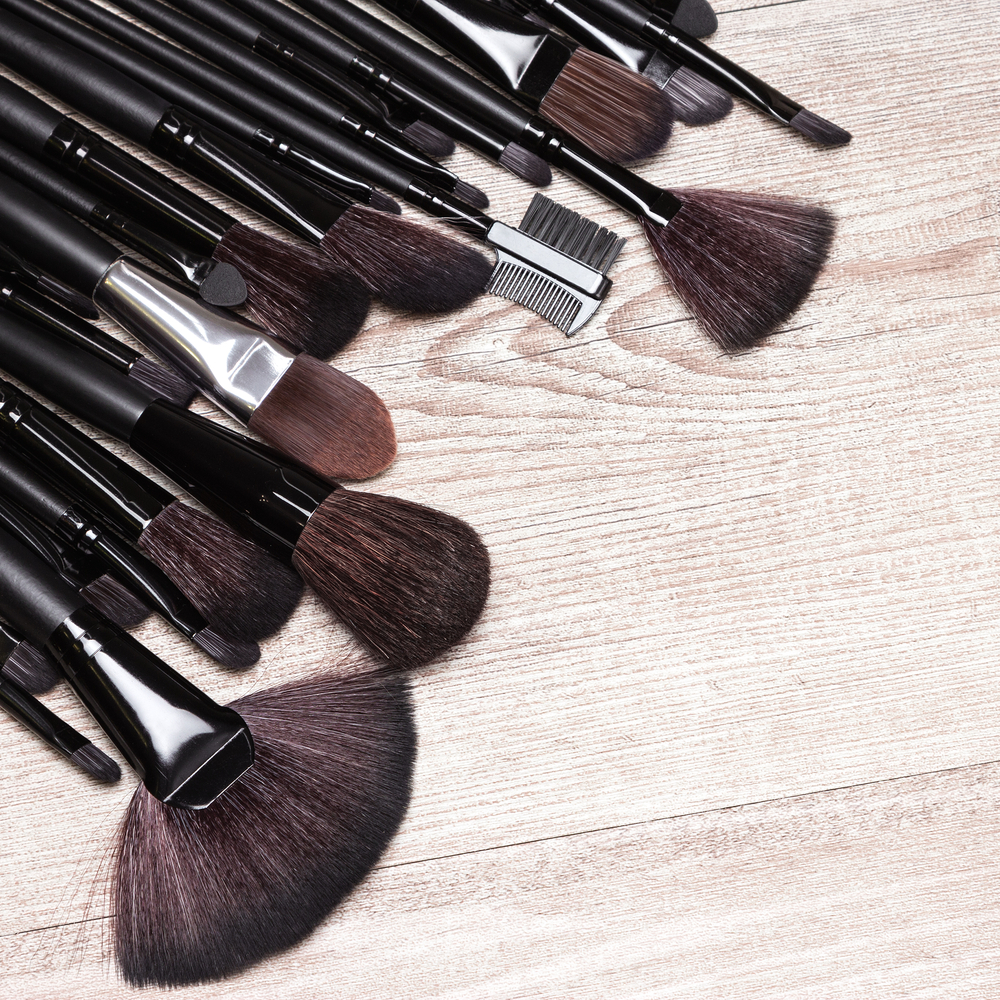From issue 59.
Words Emma Peters of Belle & Sage.
An important part of your beauty arsenal, these tools are often neglected. Here’s how to get the most out of your brushes.
Recently, a friend pulled out one of her make-up brushes to ask me why it was not giving her the results she wanted. She just couldn’t get it to blend her eyeshadow properly. I looked at the brush and gasped – it had been reduced to a stubby mess, with fibres sticking out haphazardly.
What was once a nice, fluffy brush had been reduced to a chewed-up mess. When I asked her what she had been cleaning it with, she replied, “Cleaning it?!”
There are a couple of important reasons to look after your make-up brushes. Firstly, if you invest in good quality brushes, which I highly recommend, you want them to last forever – and they will, if you take care of them.
The second reason, and arguably the most important, is hygiene. Any time you touch your face with a brush, you are transferring bacteria to the brush. After a while, unwashed brushes become a breeding ground likely to cause breakouts, irritations and even infections.
There are a couple of quick and easy ways to keep your brushes clean. As a make-up artist, I need a good brush cleaner on hand at all times and I clean them between every use. But for personal use, shampooing your brushes every few days is perfectly fine. Remember to allow plenty of drying time before the next use.
DIY brush cleaner
1 cup of water, bottled or distilled
1/3 cup isopropyl alcohol
1/2 tbsp dishwashing liquid
1/2 tbsp gentle shampoo
1/2 tbsp leave-in conditioner
Mix ingredients together in a glass jar, and transfer to a small spray bottle. Spray onto your brush without over-wetting and gently wipe the product off onto a tissue. Voilà! You’re good to go again. Even if you use a brush cleaner, it’s still important to shampoo your brushes every few uses.
Synthetic or Animal Hair?
In the past I always went for animal hair because the function was superior. There are companies that claim to gather the hair humanely, without harming any of our furry friends. I would love to believe this, but I’ve yet to find out if this is a reality.
In recent years, synthetic brushes have made quantum leaps and developed to completely mimic animal fibres, even down to having a cuticle that allows for better pick-up of product. They also claim to be more hygienic and probably are safer for those with sensitivities.
My quandary is that animal-free fibres are made from various forms of plastic. I’ve yet to find conclusive evidence that these are biodegradable, but I’m working on it.
Cleaning tips
- For animal hair, use shampoo and conditioner
- For synthetic, use shampoo or hand soap
- Only ever wet the fibre part of the brush, otherwise water will get into the handle and dislodge the glue
- After rinsing, squeeze out all the water and lie flat to dry
- If you’re using the same brush for different colours, you will need a quick-drying brush cleanser, available from most make-up stores. For a homemade version, follow this recipe (above right) that uses products you may already have at home
Sustainable brush practices
Because there doesn’t seem to be a definite solution for cruelty-free, biodegradable brushes (yet), the trick is to choose your brushes wisely. Double up on their uses so you minimise the number of brushes you own, and look after them so you don’t have to replace them often – if ever. And above all, choose quality from the get-go.
Which brushes are essential?
A make-up artist might have hundreds of brushes, but you only need a small handful of key tools.
Foundation brush
This is not essential, especially if you’re using a BB cream or really light foundation. But a brush finish is far superior for fuller-coverage foundation or a powder product.
Fluffy eyeshadow blending brush
Essential for getting a well-blended application (never think you can blend your eyeshadow with your fingers and get away with it!).
Angle brush
This brush is ideal for getting right into the lash line to apply an eyeshadow as an eyeliner, and also to blend your eye pencil.
Powder brush
For an even, smooth complexion, use this brush to buff in powder. Perfect for both setting your foundation and taking away any excess shine.
Blush brush
This can be used with powder blush or with a densely pigmented cream product. It can also be used to contour and highlight (just remember to clean it in between the two steps.)
Less is more
In the interests of keeping it simple, these are about all you need. Use your fingers to blend in your concealer – this works really well because the warmth from your finger helps blend it into the skin. Lipstick can be applied straight from the tube, or for a more natural look, try dabbing it on with your fingers.
For more from Emma Peters, see Belle & Sage, Conscious Beauty Store.







